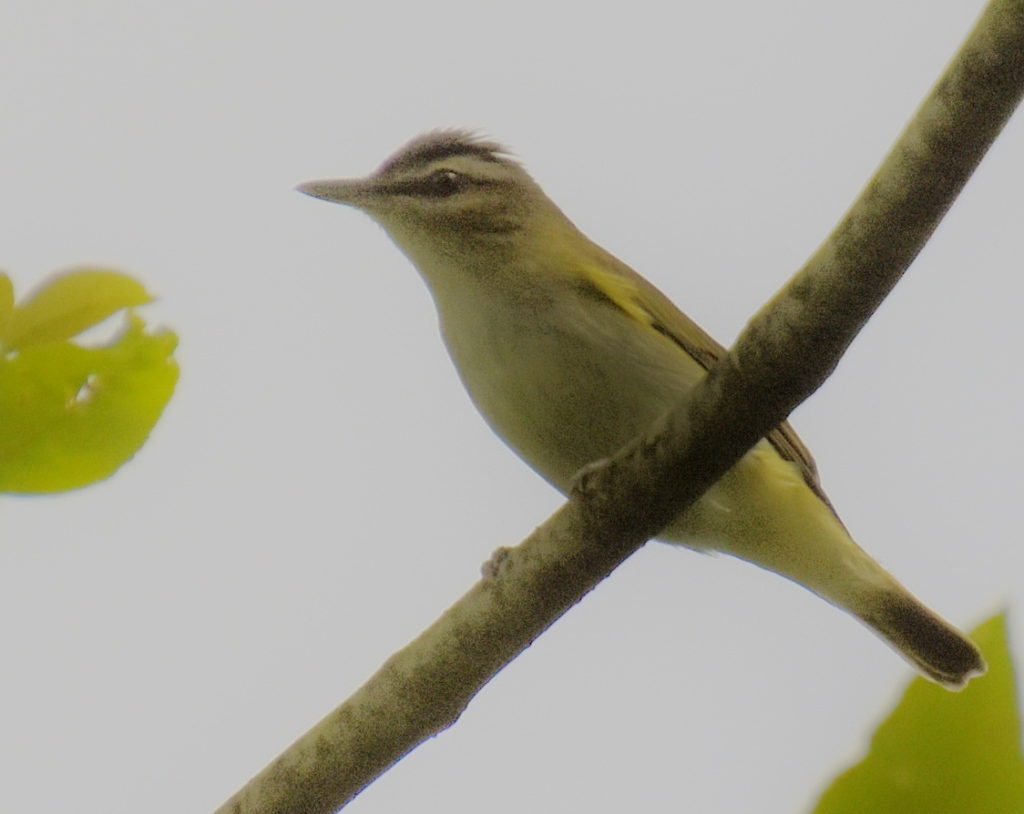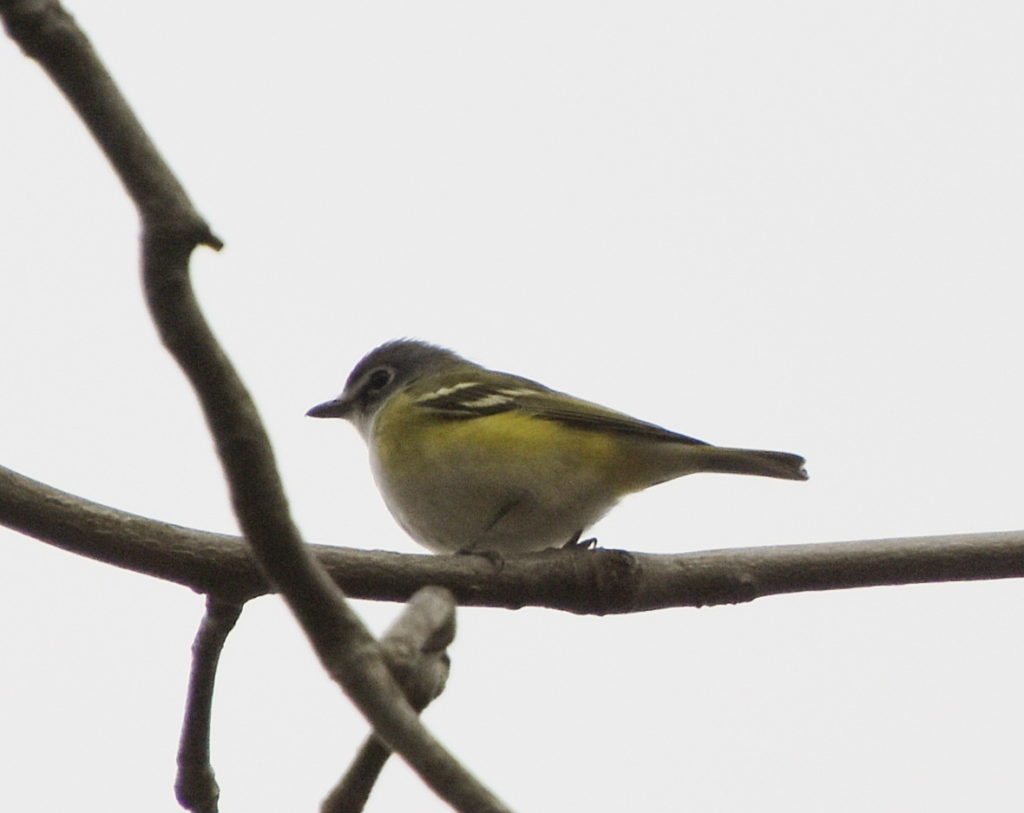Woodland Songsters
The most anticipated arrivals of Spring are the Warblers with their colorful plumage and abundant and varied vocalizations. However, there is another group of songsters that also arrives with the Spring migration. Like the warblers, some will only be passing through on their way to more northerly breeding grounds, and some will breed locally. This group, the Vireos, lack the colorful plumage of the warblers; they are muted hues of gray, white, yellow and olive green. So they are most often identified by their songs and calls. Also like warblers, they tend to occupy the mid to upper level of trees in full foliage; being less active than the warblers, they are hard to pick out by eye. They feed on insects but instead of flitting around they tend to slowly glean their meal, browsing along leaves and branches. Vireos are slightly larger, and have noticeably stouter bills that on close inspection have a slight “hook” at the tip of the upper bill. They are one of the few families of birds that continue to sing all summer, even after nesting is finished.
The most common of the vireos at Lumberton Leas is the Red-eyed Vireo. In good light their iris is a brick red color and the central pupil dark black. The head pattern is distinctive with a gray crown, white “eyebrow,” and a dark line fore and aft of the eye. Its back and wings are olive gray and it lacks wing bars. The throat, chest and belly are white. The song of the Red-eyed Vireo is repetitive, seemingly asking the same question over and over again: “here I am, where are you?”. It favors shady woodlands but you can pick it up along the “edges” of the woods and the perimeter path. The Red-eyed Vireo breeds in our area and can be seen and heard from the spring into the fall.
The other vireos are not as common but do occur here. The Warbling Vireo nests along streams in our area but is not as widespread as the Red-eyed. It is a plain vireos, gray and white with some tinges of yellow along its flanks. It does have a noticeable white eyebrow but its eye line is faint and not bold like that of the Red-eyed. It vocalizes what is described as a “drowsy repetitive warble.”
The Blue-headed Vireo is a migrant passing through to breed north of our area. It is representative of what are referred to as “spectacled” vireos as it has a distinct broad, white eye-ring that appears to be attached to a white line extending from the bill. Hence, it looks to be wearing glasses. It has a blue-gray head, greenish back, white throat and white wing bars.
Another uncommon breeder in our area, and one of the more colorful in the family, is the Yellow-throated Vireo. The Yellow-throated is another of the spectacled vireos. It specs are similar to that of the Blue-headed except they are yellow in color. It has a yellow throat, chest and two white wing bars.




